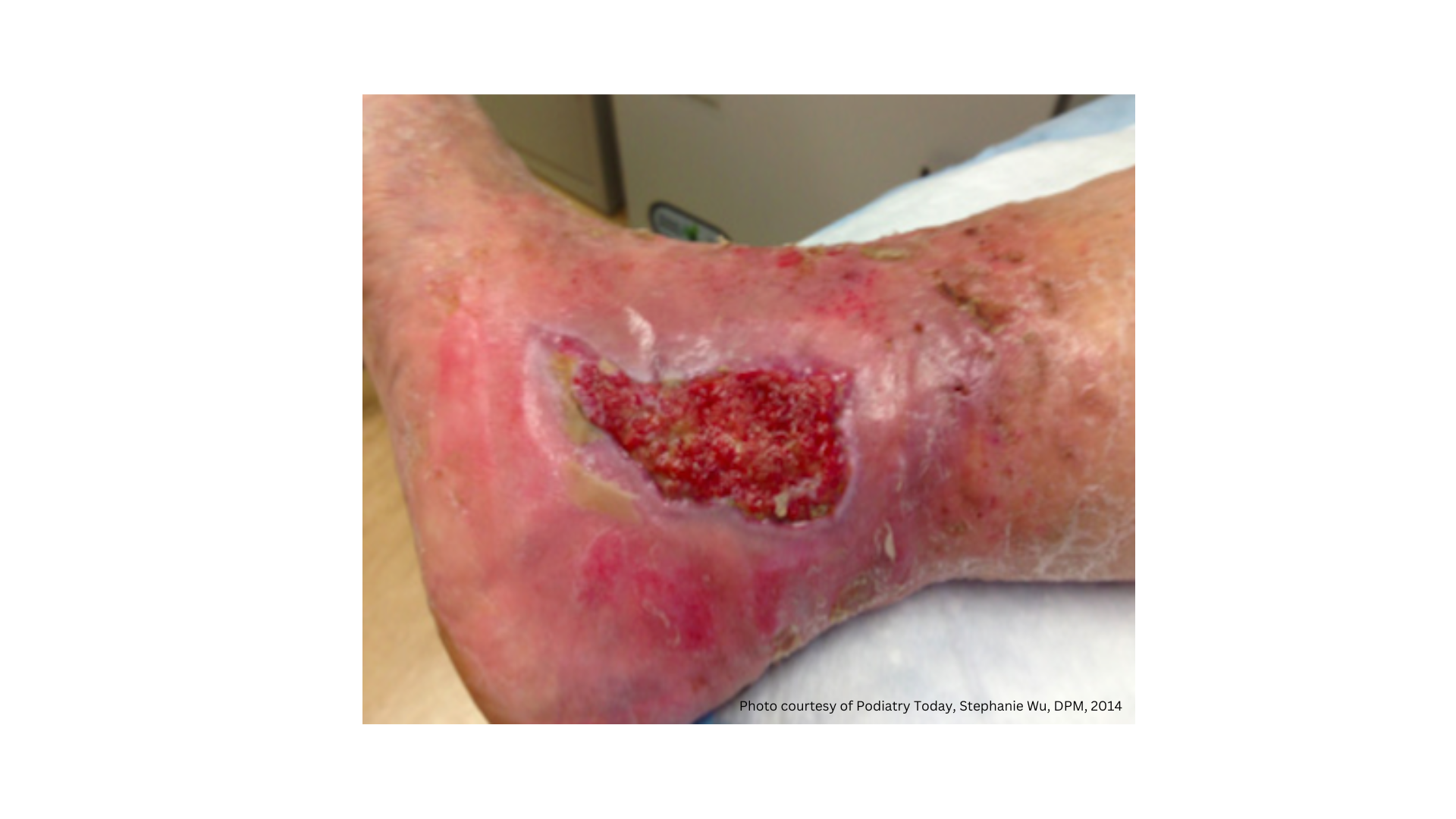What Is a Kennedy Terminal Ulcer?
April 22, 2021
Many questions arise and confusion develops when wound care providers mention Kennedy terminal ulcers (KTUs). Because these wounds are not frequently seen, and because they develop rapidly and observation ends abruptly with the death of the patient, wound care providers may have never observed a KTU, even in a long career in wound care. Although the literature reveals that there is a lack of knowledge regarding the exact cause of a KTU, let’s look at the facts currently known from published resources:
Frequently Asked Questions
How Does a Kennedy Terminal Ulcer Manifest?
The location of a KTU is usually on the sacrum, although it can develop in other areas of the body. It occurs most commonly in geriatric terminally ill patients, but there have been a number of cases in the pediatric population.
Are There Two Types of Kennedy Terminal Ulcers?
The literature identifies two different presentations of KTUs. The first presentation is bilateral and has the shape of a butterfly, pear, or horseshoe with irregular borders; it has a sudden onset on the sacrum or coccyx. The initial presentation is usually a blister or superficial skin loss, which progresses to a yellow or black necrotic wound. These KTUs may precede death by a few days to a few weeks. The second presentation, commonly called “3:30 syndrome,” manifests unilaterally with an intact dark spot or small macular area that rapidly develops (a matter of hours) into a larger, often necrotic wound. This presentation usually precedes death by a few hours, usually less than 24 hours.
What Is the Cause of a Kennedy Terminal Ulcer?
The literature reveals that the exact cause of KTUs is unknown. As we know, the skin is the body’s largest organ. During the dying process, the body shunts blood and nutrients from other organs to the heart and brain. Because perfusion to the skin is limited during this process, the skin over the bony prominences becomes even more vulnerable to pressure and injury. Pressure-relieving interventions that would normally prevent injury may fail in a patient in the dying stages, thus resulting in a KTU.
What Is the Difference Between a Kennedy Terminal Ulcer and a Pressure Injury?
KTUs are specific to patients in the late stages of the dying process. KTUs usually have a specific shape, location, and rapid progression.
How Do You Treat a Kennedy Terminal Ulcer?
A KTU is treated in the same as any other wound of the same depth or tissue loss. Because the patient is likely receiving palliative treatment, it would not be feasible to utilize advanced treatments such as negative pressure would therapy or biological grafting. The focus of wound care should include pressure relief, protection of intact skin, management of wound exudate, odor and pain management, and prevention of wound infection. It is vital to inform the family or caregiver that the focus of wound care is on comfort instead of healing.
Can the Kennedy Terminal Ulcer improve or be healed?
Most KTUs do not improve or heal because the body does not have enough resources for wound healing. As with anything regarding the body, there is always an outlier who may recover.
To Stage or not to Stage?
There is a great deal of controversy about staging a KTU as a pressure injury. Some clinicians debate that the KTU is part of the dying process and is not related to pressure but rather to hypoperfusion. Others state that KTUs have a pressure component and should therefore be staged. Some clinicians believe that the term KTU should be abandoned, and the lesion should be labeled skin failure. Whatever the thought process, it is better to err on the side of staging any wound that has an apparent pressure component, even if it appears that end-of-life skin failure is a contributing factor.
Resources
- Ayello E, Levine J, Langemo D, et al. Reexamining the literature on terminal ulcers, SCALE, skin failure, and unavoidable pressure injuries. Adv Skin Wound Care. 2019;32(3):109-121. Bateman J. Kennedy terminal ulcer #383. J Palliat Med. 2019;22(12):1612-1613. doi:10.1089/jpm.0495.
- Kennedy terminal ulcer/palliative care and hospice care. WoundSource Practice Accelerator. 2018. https://www.woundsource.com/blog/kennedy-terminal-ulcerpalliative-care-…. Accessed March 30, 2021.
- Latimer S, Shaw J, Hunt T, Mackrell K, Gillespie BM. Kennedy terminal ulcers. J Hosp Palliat Nurs. 2019;21(4):257-263 . doi:10.1097/NJH.0000000000000563. Understanding the Kennedy terminal ulcer. 2014. www.kennedyterminalulcer.com. Accessed April 13, 2021.
About the Author
Cathy Wogamon, DNP, MSN, FNP-BC, CWON, CFCN is a Nurse Practitioner at the VA Medical Center in Lake City, Florida. She is the Wound Care Provider in the Out-Patient Clinic serving the Veteran Population of North Florida and South Georgia. Cathy is certified in wound, ostomy and foot care. In addition to her wound care experience, she also has experience in acute care, pediatrics, home health, long-term care and has served as a Professor of Nursing. Cathy’s passion for wound care began while she was working in the long-term care setting as an RN. She serves the veteran population as a memorial to her dad, a combat wounded WWII Veteran.
The views and opinions expressed in this content are solely those of the contributor, and do not represent the views of WoundSource, HMP Global, its affiliates, or subsidiary companies.











